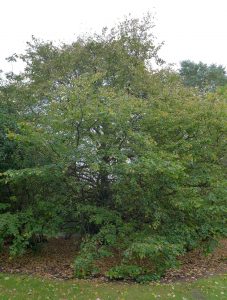Lime – Tilia cordata (Malvaceae)
Gaelic: teile
Common Names: Small-leaved Lime
The lime is native across much of Europe and into western Asia. In Britain it is thought to be native up into northern England, with populations further north introduced. The leaves are yellowish-green in colour and heart-shaped, inspiring its status as the Tree of Love. The small yellow flowers open in early summer and are heavily scented and full of nectar attracting large numbers of bees and other insects to the trees. Bees quite often ‘overdose’ on nectar, becoming drowsy and subdued. There has been some suggestion that the nectar is toxic to the bees, as large numbers of dead bees can be found on the ground surrounding them. However there is no evidence that this is case and it is more likely that they are feeding when nectar is low, wasting energy and eventually dying as a result. More on this can be seen in the following posts by RBGE staff:
http://stories.rbge.org.uk/archives/5319
http://stories.rbge.org.uk/archives/5389
Lime wood has a very fine grain, making it ideal for small and detailed carvings. The inner layer of the bark (bast) can be stripped out and made in to a crude string. In central Europe the flowers are used to make Linden Flower Tea, which is thought to be beneficial as an anti-inflammatory for respiratory problems.
The common lime, which is widely used in plantings in parklands and estates is a hybrid between Tilia cordata and Tilia platyphyllos. This hybrid readily suckers from the base, and older trees can be easily spotted by the large tufts if shoots around the base of the trunk.
Location


2 Comments
2 Pingbacks